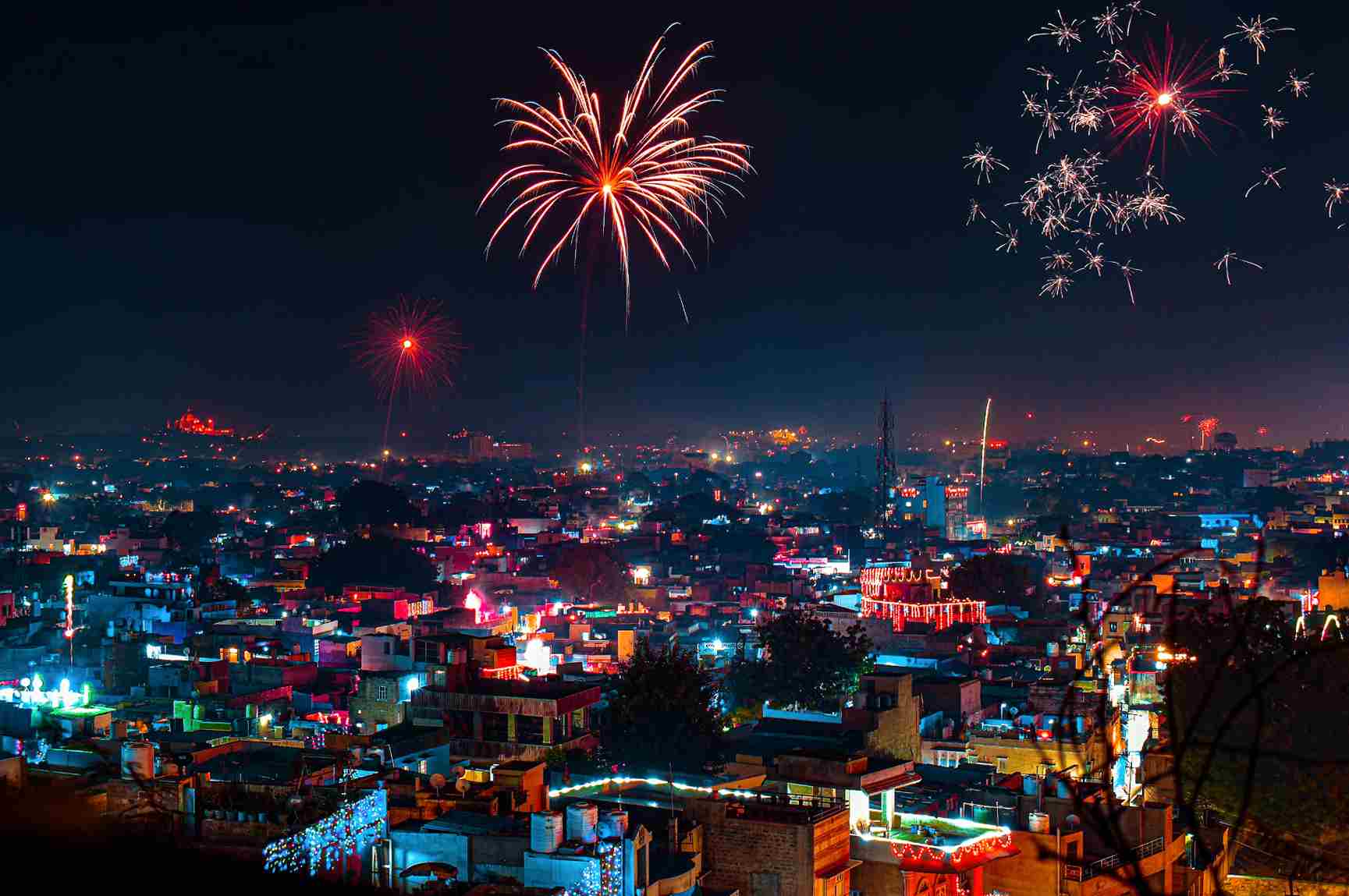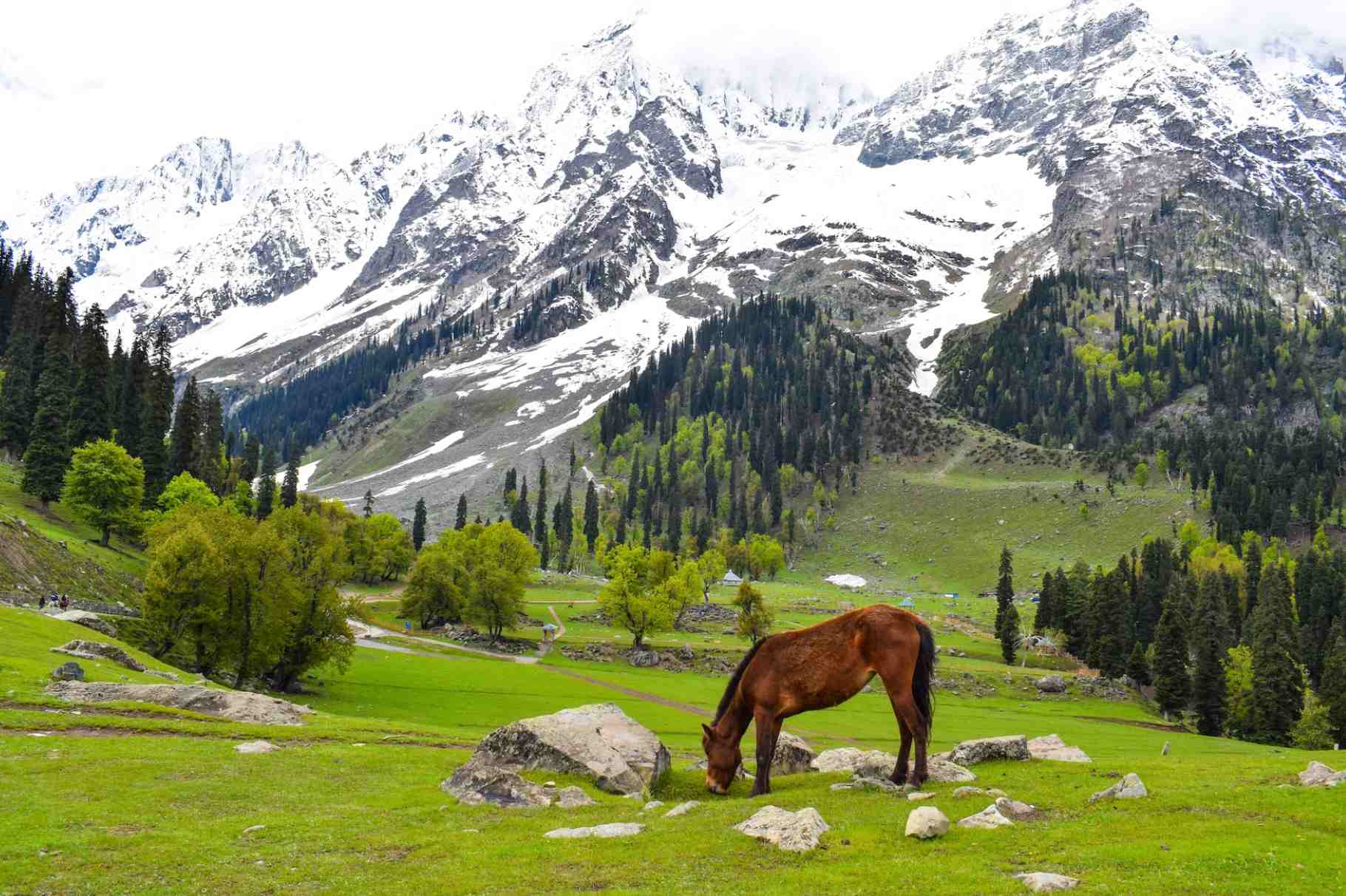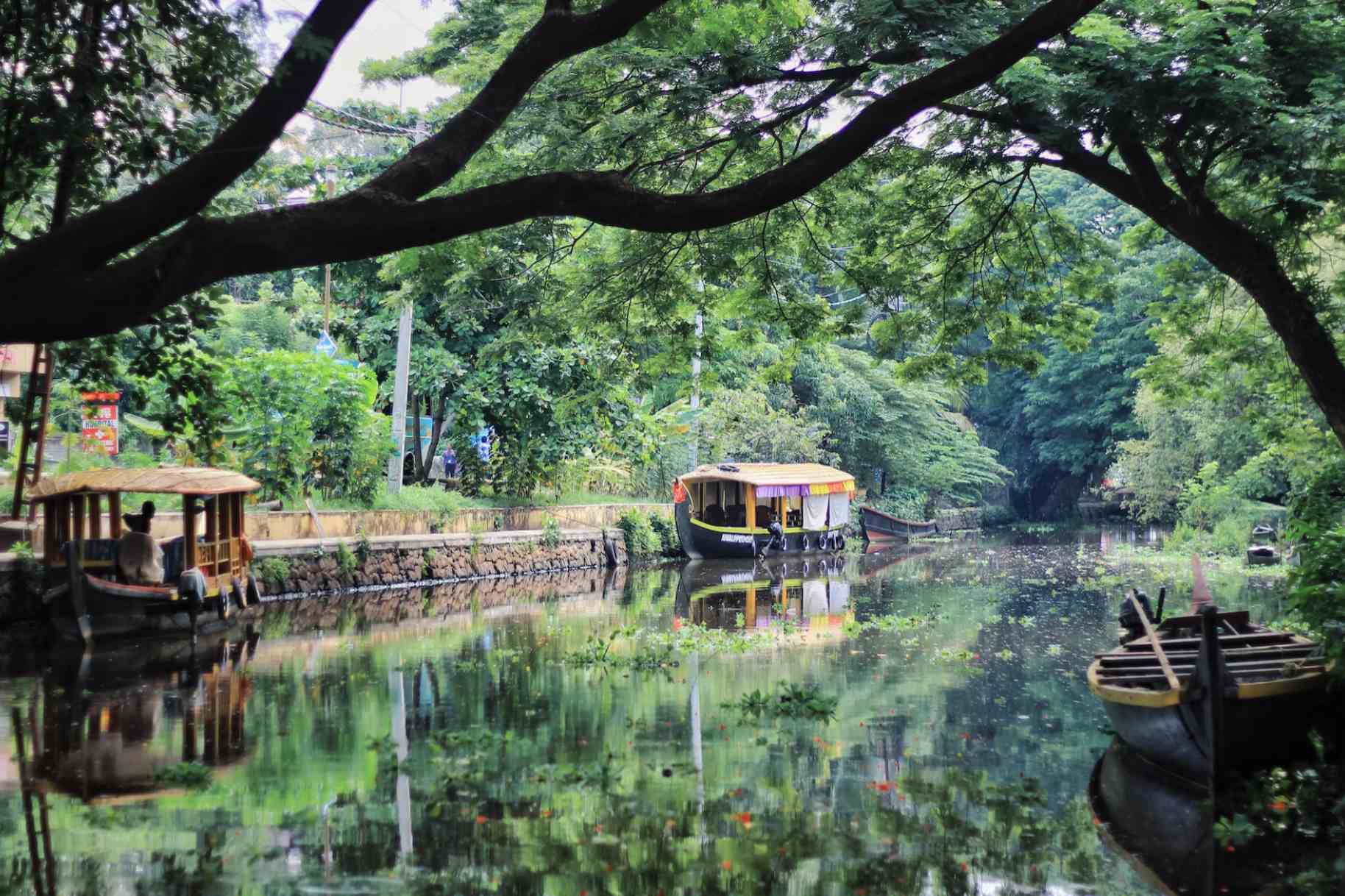Discover India | A 2023 travel guide | The top 10 places to visit
"The Taj Mahal"
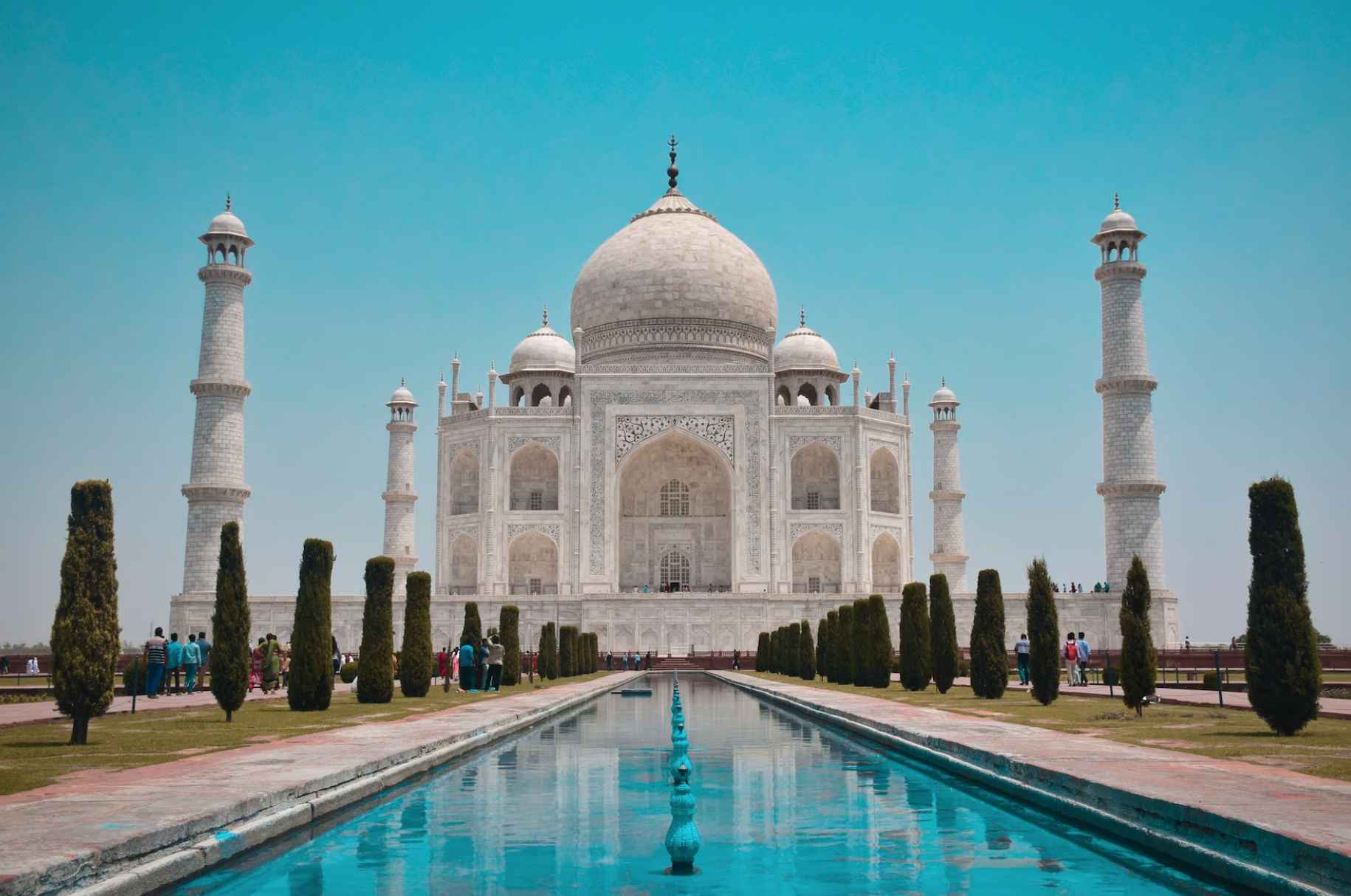
If you're a traveller planning a visit to India, the Taj Mahal is an absolute must-see destination. Situated in the city of Agra, this architectural wonder will leave you in awe with its breathtaking beauty and fascinating history. Here's what you need to know to make the most of your visit to the Taj Mahal:
History and Significance: The Taj Mahal was built by Emperor Shah Jahan as a mausoleum for his beloved wife, Mumtaz Mahal. It is considered one of the greatest symbols of love and is a UNESCO World Heritage Site. The monument's history, romance, and architectural grandeur make it an iconic landmark.
Architecture and Design: The Taj Mahal's design is a harmonious blend of Islamic, Persian, and Indian architectural styles. Its stunning white marble exterior, intricate marble inlay work, and symmetrical layout make it a visual masterpiece. The central dome, minarets, and ornamental gardens create a mesmerizing ensemble.
Best Time to Visit: The Taj Mahal is open to visitors from sunrise to sunset, except on Fridays when it is closed for prayers. To enjoy the beauty of the monument in a relatively peaceful environment, consider visiting early in the morning. The soft golden light of sunrise enhances the magical ambiance.
Exploring the Taj Mahal: Upon entering the complex, you'll pass through a grand gateway that frames your first view of the Taj Mahal. Take your time to stroll through the vast gardens, which provide a serene atmosphere and stunning views of the monument. As you approach the Taj Mahal, notice the intricate details and delicate marble carvings.
Interior Highlights: Inside the mausoleum, you'll find the stunning cenotaphs of Shah Jahan and Mumtaz Mahal. While visitors are not allowed to enter the actual tombs, you can admire the exquisite inlay work and beautiful calligraphy. The play of light and shadow inside the chamber creates a tranquil and ethereal atmosphere.
Nearby Attractions: Agra is rich in history and culture, offering other attractions to explore. The Agra Fort, another UNESCO World Heritage Site, is a magnificent red sandstone fortress known for its impressive architecture and captivating history. It provides a panoramic view of the Taj Mahal from its premises.
Tips for Visitors: The Taj Mahal attracts a large number of tourists, so it's advisable to purchase tickets in advance to avoid long queues. Dress modestly and wear comfortable shoes as you'll be walking around the complex. It's also recommended to bring a sunhat, sunscreen, and drinking water, especially during the warmer months.
Visiting the Taj Mahal is an experience that will leave a lasting impression. Its architectural beauty, rich history, and romantic allure make it an iconic destination for travelers seeking inspiration and wonder. Prepare to be enchanted by the Taj Mahal's majestic presence, and capture memories that will stay with you forever.
"The Himalayas"
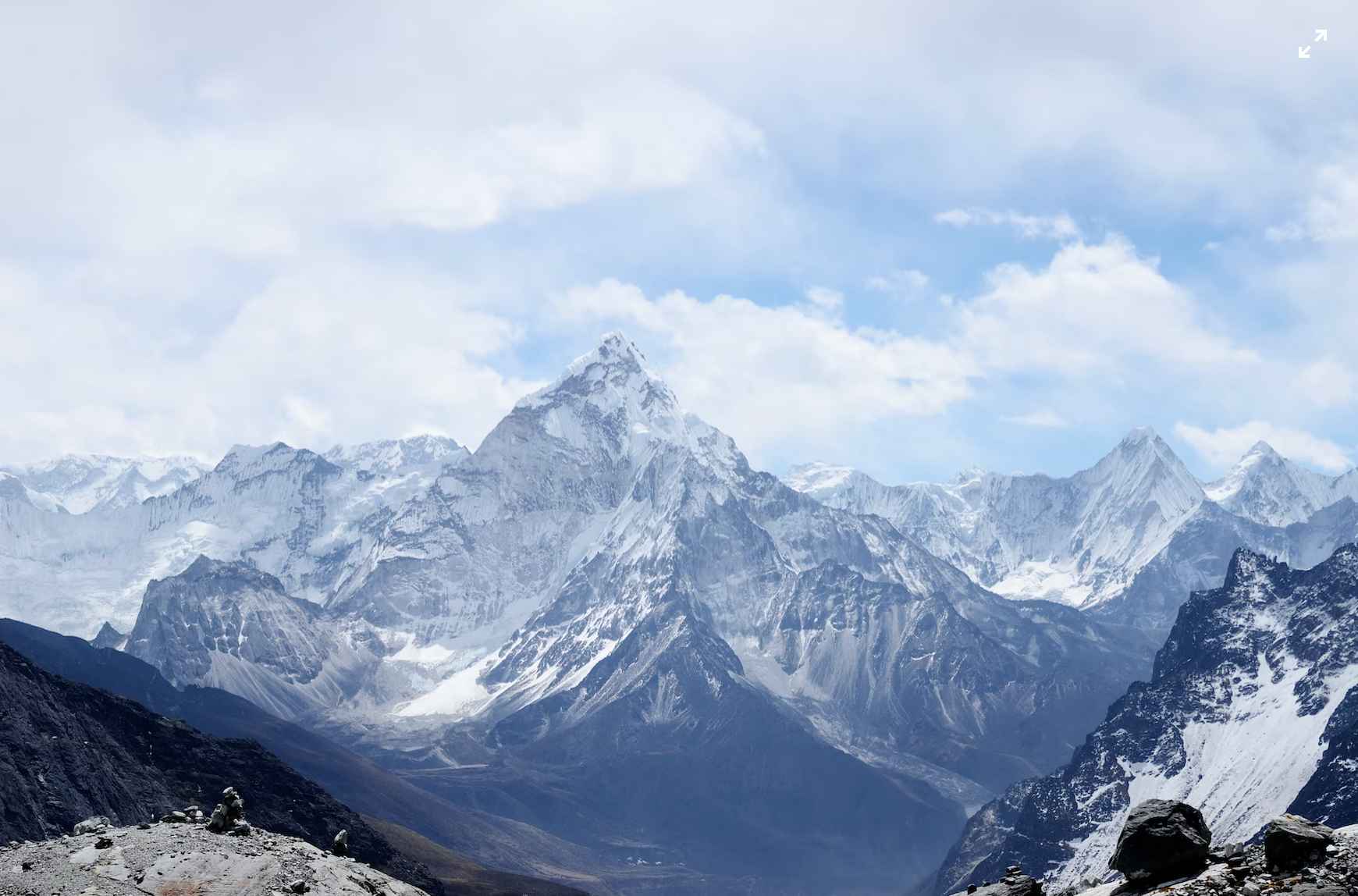
If you're a traveller seeking an awe-inspiring and adventurous destination, look no further than the majestic Himalayas. Spanning across several countries, including India, Nepal, Bhutan, and Tibet, the Himalayas are the highest and most iconic mountain range in the world. Here's what you need to know to make the most of your Himalayan adventure:
Geographic and Cultural Diversity: The Himalayas are not just a mountain range; they encompass a diverse range of landscapes, climates, and cultures. From snow-capped peaks to lush valleys, you'll encounter breathtaking vistas at every turn. Each region along the Himalayas has its own unique culture, traditions, and cuisine, offering an enriching experience for travellers.
Trekking and Mountaineering: The Himalayas are a paradise for adventure enthusiasts. With a multitude of trekking routes and mountaineering opportunities, you can embark on unforgettable journeys. Popular treks include the Everest Base Camp Trek in Nepal, the Annapurna Circuit Trek, the Kashmir Great Lakes Trek in India, and the Druk Path Trek in Bhutan. Mountaineers can challenge themselves with peaks like Mount Everest, Kanchenjunga, and Nanda Devi.
Spiritual and Sacred Sites: The Himalayas are deeply intertwined with spirituality and are home to numerous sacred sites. In India, the town of Rishikesh is known as the "Yoga Capital of the World" and offers spiritual retreats, meditation centres, and the opportunity to explore the Ganges River. In Nepal, the ancient city of Kathmandu houses several UNESCO World Heritage Sites, including the famous Boudhanath Stupa and Pashupatinath Temple.
Wildlife and Nature: The Himalayas boast incredible biodiversity and are home to a wide array of flora and fauna. You may spot rare and endangered species such as the snow leopard, red panda, musk deer, and Himalayan monal during your journey. National parks like Sagarmatha National Park in Nepal and Jim Corbett National Park in India offer opportunities for wildlife safaris and nature exploration.
Cultural Immersion: Interacting with the local communities in the Himalayan region provides a unique cultural experience. Learn about the traditions and daily lives of the Sherpas in Nepal, experience the vibrant festivals of Bhutan, or visit the remote villages of Ladakh in India. Immerse yourself in the warm hospitality and rich heritage of the Himalayan people.
Weather and Timing: The Himalayas experience varied climates, so it's important to plan your visit accordingly. The spring (March to May) and autumn (September to November) seasons are generally considered the best times for trekking, with clear skies and moderate temperatures. Winter months offer a chance to witness snow-covered landscapes and engage in winter sports, while the monsoon season (June to August) brings lush greenery but also heavy rainfall.
Safety and Preparation: Traveling in the Himalayas requires proper preparation and precautions. Acclimatisation is essential, especially when trekking at higher altitudes, to avoid altitude sickness. Ensure you have appropriate gear, including sturdy trekking boots, warm clothing, and a reliable backpack. It's advisable to hire experienced guides or join organised trekking groups for safety and navigation.
The Himalayas offer an unparalleled blend of natural beauty, adventure, spirituality, and cultural immersion. Whether you seek a challenging trek, a spiritual retreat, or simply the serenity of nature, the Himalayas will captivate your senses and leave you with lifelong memories. Prepare yourself for a journey of a lifetime as you explore the breathtaking landscapes and discover the rich tapestry of cultures that thrive in this awe-inspiring mountain range.
"The Backwaters of Kerala"
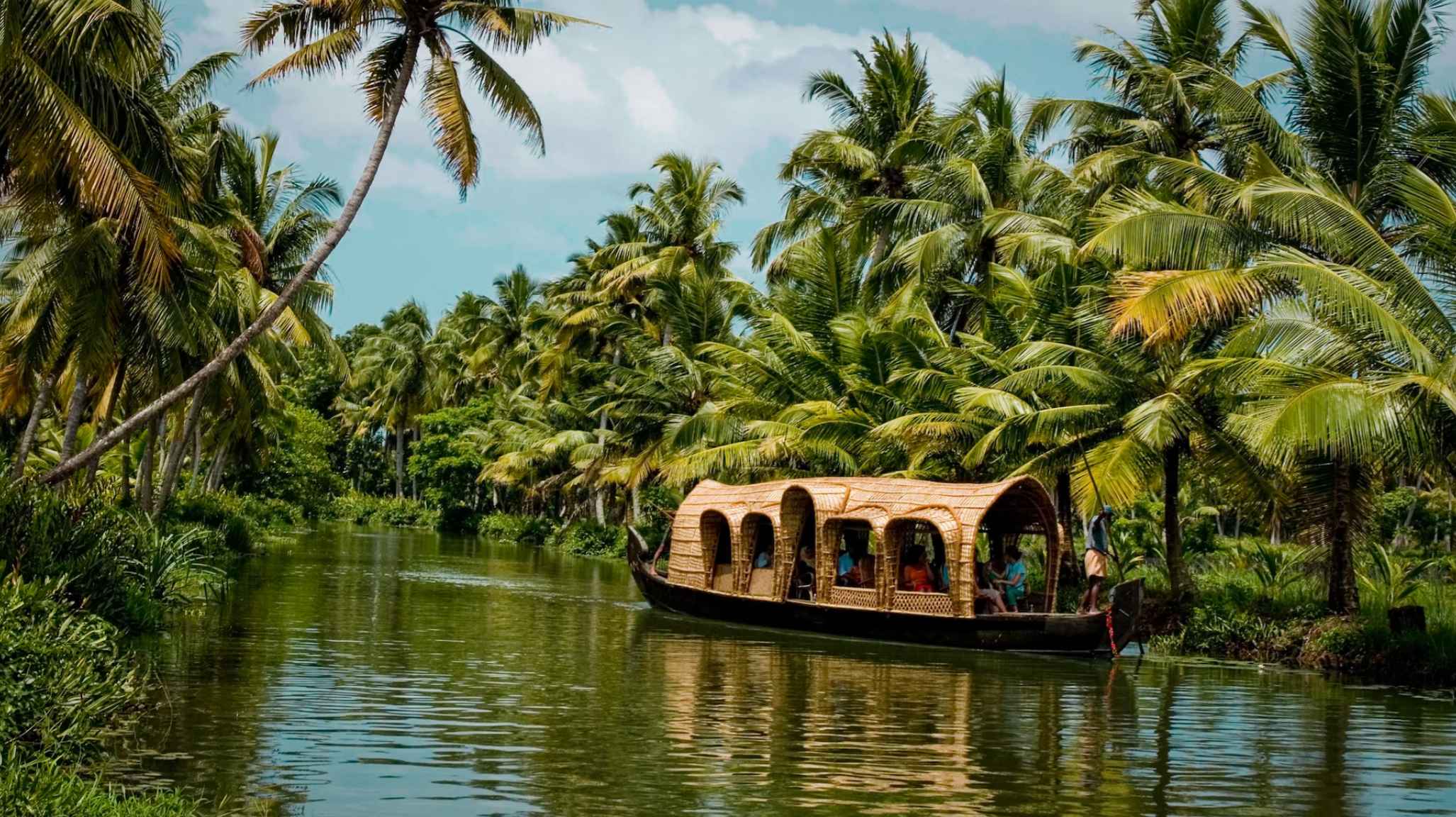
If you're a traveller seeking a tranquil and unique experience in India, a visit to the backwaters of Kerala should be high on your list. Known for its serene waterways, lush greenery, and charming villages, the backwaters offer a delightful escape from the hustle and bustle of city life. Here's what you need to know to make the most of your journey through the backwaters of Kerala:
Introduction to the Backwaters: The backwaters of Kerala are a network of interconnected canals, rivers, and lagoons that stretch along the coast. They are a result of the intricate network of rivers and water bodies formed by the Arabian Sea. The most famous backwater destination in Kerala is Alleppey (also known as Alappuzha), but there are other beautiful areas to explore as well, such as Kumarakom and Kollam.
Houseboat Experience: One of the best ways to immerse yourself in the backwaters is by staying aboard a traditional houseboat, known as a "kettuvallam." These houseboats are made of eco-friendly materials like bamboo and coir ropes and offer comfortable accommodation with all modern amenities. Drifting along the serene waterways, you can enjoy breathtaking views of palm-fringed landscapes, spot birdlife, and witness the local way of life.
Cruising the Backwaters: Embarking on a houseboat cruise is a unique and tranquil experience. You can choose from a variety of cruises ranging from a few hours to several days, depending on your preference. As you glide along the water, you'll pass through picturesque villages, lush paddy fields, and coconut groves. Take in the sights, relax on the deck, and savour delicious Kerala cuisine prepared by the onboard crew.
Exploring Local Life: Along the backwaters, you'll encounter the vibrant culture and friendly people of Kerala. Interact with the locals, visit traditional homes, and gain insights into their daily lives. Witness fishermen casting their nets, women weaving coir ropes, and farmers tending to their fields. Don't miss the opportunity to try toddy, a local alcoholic beverage made from the sap of coconut trees.
Backwater Activities: While cruising, you can engage in various activities to enhance your backwater experience. Opt for a canoe ride through narrower canals to explore hidden corners and observe the rich flora and fauna. Visit local coir factories to see how coir ropes and mats are made. You can also enjoy Ayurvedic massages and treatments at the many resorts and spas located near the backwaters.
Snake Boat Races: If you're visiting during the months of August and September, you might be fortunate enough to witness the famous snake boat races. These colourful and adrenaline-filled races take place on the backwaters and are a spectacle to behold. Large traditional boats, adorned with elaborate decorations, compete against each other in a thrilling display of skill and teamwork.
Eco-Tourism and Responsible Travel: The backwaters of Kerala are known for their ecological significance, and it's essential to promote responsible travel practices. Choose eco-friendly houseboats that prioritise sustainability and support local communities. Avoid littering and respect the delicate ecosystem of the backwaters.
The backwaters of Kerala offer a serene and enchanting experience that will leave you refreshed and rejuvenated. From the leisurely houseboat cruises to exploring the local way of life, you'll be captivated by the beauty and tranquillity of this unique destination. Immerse yourself in the backwaters of Kerala, and let the calmness of nature wash over you as you create unforgettable memories in this scenic paradise.
"The City of Jaipur"
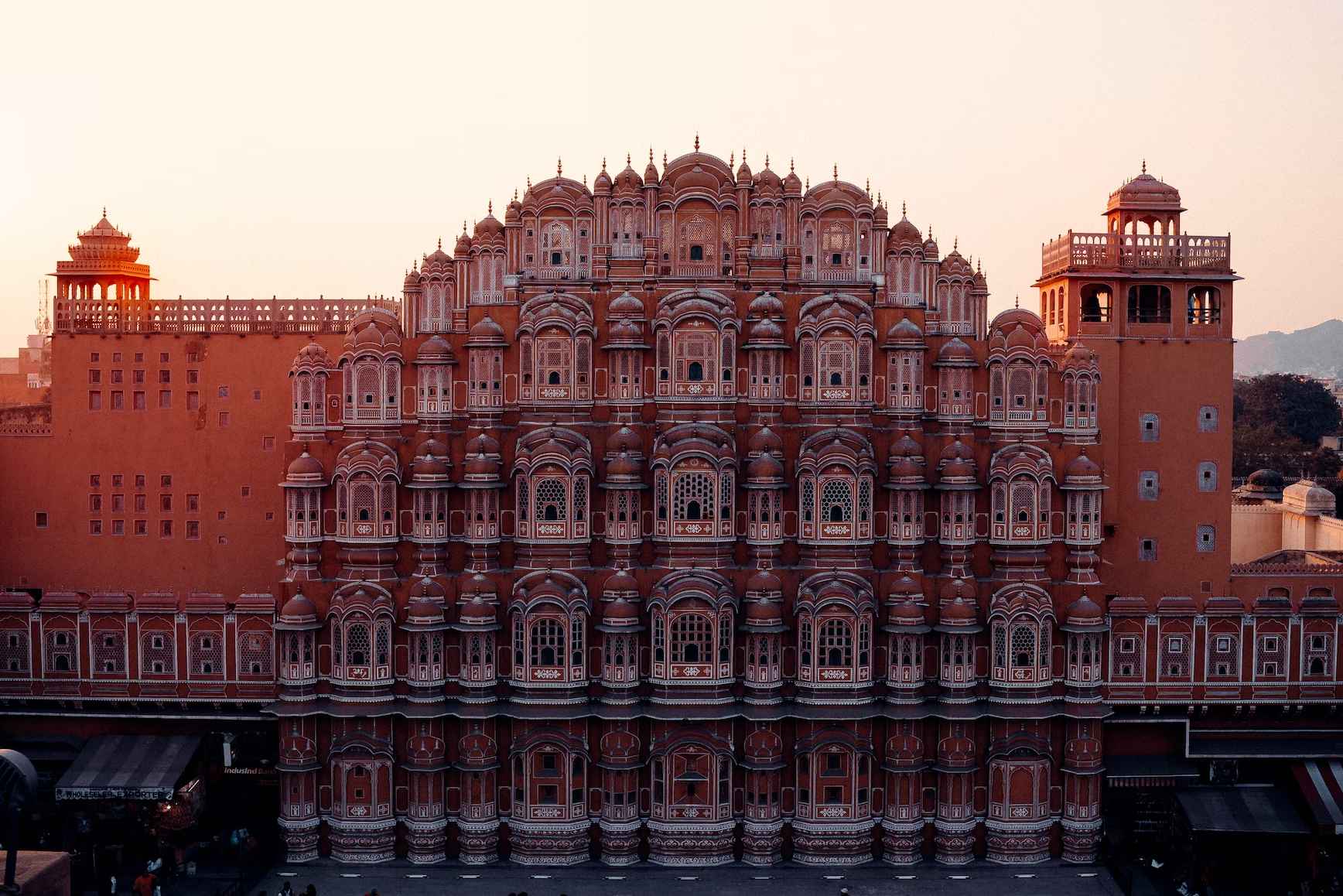
If you're a traveller looking to immerse yourself in the rich heritage and vibrant culture of India, a visit to the captivating city of Jaipur should be on your itinerary. Known as the "Pink City," Jaipur is the capital of the colourful state of Rajasthan and offers a fascinating blend of history, architecture, bustling bazaars, and warm hospitality. Here's what you need to know to make the most of your visit to the city of Jaipur:
Historical Significance: Jaipur was founded in 1727 by Maharaja Sawai Jai Singh II, a visionary ruler. The city was carefully planned and designed with geometric precision, making it one of the first planned cities in India. Jaipur served as the capital of the princely state of Jaipur and has since become a symbol of Rajasthan's royal heritage.
Architectural Marvels: Jaipur is renowned for its magnificent palaces, grand forts, and stunning architectural landmarks. The iconic Hawa Mahal, or "Palace of the Winds," with its intricate honeycomb facade, is a must-visit. The City Palace complex showcases a blend of Rajput and Mughal architecture and houses museums displaying royal artefacts. Amber Fort, located on the outskirts of Jaipur, is a majestic fortification known for its impressive palaces, intricate mirror work, and stunning views.
Jaipur's Pink City: The old part of Jaipur is famous for its pink-hued buildings, which were painted in this color to welcome the Prince of Wales in 1876. Exploring the narrow streets and bustling markets of the Pink City is an experience in itself. Don't miss the vibrant Johari Bazaar for jewellery, Bapu Bazaar for textiles and handicrafts, and Chandni Chowk for traditional Rajasthani street food.
Cultural Experiences: Jaipur is a treasure trove of cultural delights. Attend a mesmerising folk dance performance, such as the lively Kalbelia or the graceful Ghoomar. Explore the local markets for exquisite textiles, block-printed fabrics, traditional handicrafts, and precious gemstones. Indulge in the flavours of Rajasthan through its culinary delights, including the famous dal baati churma, laal maas (spicy meat curry), and traditional sweets.
Festivals and Celebrations: Jaipur comes alive during its vibrant festivals. The Jaipur Literature Festival, one of the world's largest literary events, attracts renowned authors and intellectuals from around the globe. The Teej festival, celebrating the arrival of monsoon, is a joyous affair with processions, folk dances, and cultural performances. The Elephant Festival and Gangaur Festival are other popular events that showcase the city's rich traditions.
Day Trips from Jaipur: Use Jaipur as a base to explore the surrounding attractions. Visit the abandoned city of Fatehpur Sikri, a UNESCO World Heritage Site, or marvel at the stepwells of Abhaneri. The serene Jal Mahal, a palace floating in the middle of Man Sagar Lake, is a picturesque sight. The rural village of Samode, known for its stunning havelis and hospitality, is another popular day trip option.
Hospitality and Accommodation: Jaipur offers a wide range of accommodation options, from heritage hotels and luxury resorts to budget-friendly guesthouses and homestays. Experience the royal Rajasthani hospitality by staying in a beautifully restored haveli or palace hotel, where you can relish the opulence of the bygone era.
Jaipur is a city that seamlessly blends tradition and modernity, offering a captivating glimpse into Rajasthan's rich cultural tapestry. From exploring architectural marvels to immersing yourself in the bustling markets and indulging in delectable
"The Beaches of Goa"
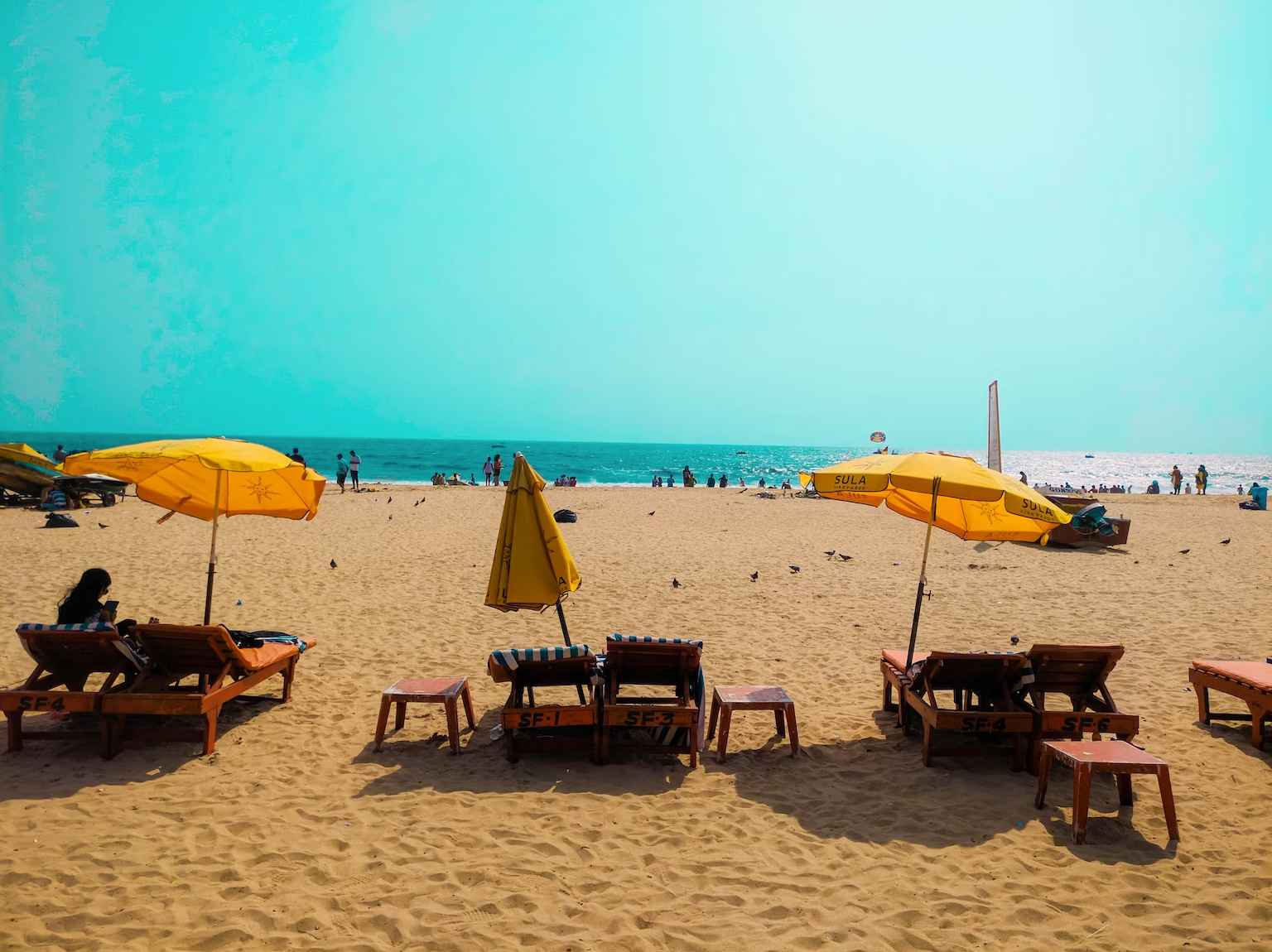
If you're a traveller seeking sun, sand, and relaxation, the beaches of Goa are an ideal destination. Located on the western coast of India, Goa is famous for its pristine coastline, vibrant beach culture, and a perfect blend of natural beauty and bohemian charm. Here's what you need to know to make the most of your visit to the beaches of Goa:
Beach Variety: Goa offers a diverse range of beaches, each with its own unique character. From the bustling and popular beaches in North Goa to the serene and secluded ones in South Goa, you'll find a beach to suit your preferences. Some of the must-visit beaches include Calangute, Baga, Anjuna, Vagator, Candolim, Palolem, and Agonda.
Sun, Sand, and Sea: Goa's beaches are renowned for their golden sands, clear turquoise waters, and pleasant tropical climate. Relax on the sun loungers, take a dip in the refreshing sea, or simply soak up the sun while enjoying the stunning coastal views. Goa's beaches provide the perfect backdrop for unwinding and rejuvenating.
Water Sports and Activities: If you're seeking adventure, Goa's beaches offer a plethora of water sports and activities. From parasailing and jet skiing to banana boat rides and snorkelling, there's something for everyone. Dive into the underwater world with scuba diving or try your hand at windsurfing. The lively beach shacks provide equipment rentals and guidance for these activities.
Beach Shacks and Cuisine: The beach shacks that dot Goa's coastline are an essential part of the Goan beach experience. These vibrant establishments offer a relaxed ambiance, live music, and a variety of delicious food and drinks. Indulge in mouthwatering seafood dishes, sip on refreshing cocktails, and savour the fusion of Indian and international flavours.
Nightlife and Parties: Goa is famous for its vibrant nightlife and beach parties. The beaches of North Goa, especially Anjuna and Baga, come alive after the sun sets. Dance to the beats of renowned DJs, enjoy live music performances, or simply chill out with friends at one of the beachside bars or clubs. The atmosphere is electric, making it a paradise for party enthusiasts.
Beach Hopping and Exploration: Goa's compact size makes it easy to explore multiple beaches in a single visit. Rent a scooter or hire a taxi and embark on a beach-hopping adventure. Discover hidden coves, pristine stretches of sand, and secluded beaches that offer tranquillity away from the crowds. Don't miss the opportunity to witness stunning sunsets over the Arabian Sea.
Cultural Attractions: Goa's beaches are not just about sun and sand; the state is also rich in cultural heritage. Take a break from the beach and visit the UNESCO World Heritage Sites of Old Goa, including the Basilica of Bom Jesus and Se Cathedral. Explore the Portuguese-influenced architecture, visit ancient temples, and experience the blend of Indian and Western cultures.
Goa's beaches offer a perfect mix of relaxation, adventure, and cultural exploration. Whether you seek a lively beach party or a peaceful retreat, you'll find it all in the charming beach towns of Goa. Soak in the laid-back vibe, indulge in delicious cuisine, and create unforgettable memories as you embrace the sun, sea, and sand on the beautiful beaches of Goa.
"The Temples of Khajuraho"
These UNESCO World Heritage Site temples in Madhya Pradesh are famous for their erotic sculptures. The temples are an important example of medieval Indian art.
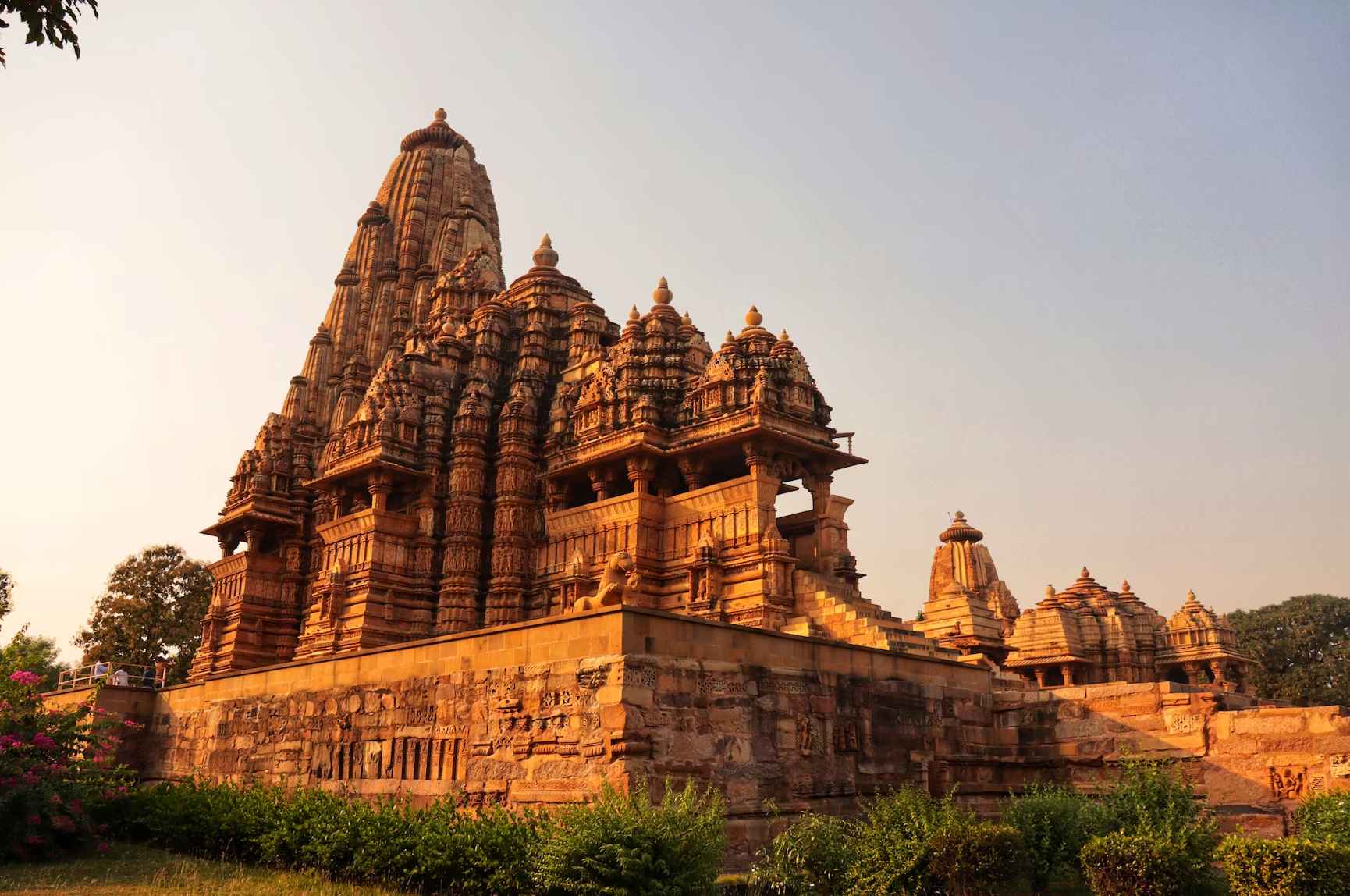
If you're a traveller with a fascination for ancient architecture and intricate carvings, a visit to the temples of Khajuraho should be on your bucket list. Located in the state of Madhya Pradesh in India, Khajuraho is renowned for its exquisite group of Hindu and Jain temples, which are a UNESCO World Heritage Site. Here's what you need to know to make the most of your visit to the temples of Khajuraho:
Architectural Splendour: The temples of Khajuraho were built between the 9th and 11th centuries by the Chandela dynasty. These architectural marvels are famous for their intricate stone carvings that depict various aspects of human life, including sensuous and divine figures, celestial nymphs, gods, and goddesses. The temples showcase a harmonious blend of Nagara-style (Northern Indian) and Dravidian-style (Southern Indian) architectural elements.
Temple Complexes: The temples of Khajuraho are divided into three main groups: the Western Group, Eastern Group, and Southern Group. The Western Group is the largest and most famous, housing several significant temples, including the iconic Kandariya Mahadeva Temple, which is dedicated to Lord Shiva. Other notable temples in the Western Group include Lakshmana Temple, Vishwanath Temple, and Matangeswara Temple.
Intricate Sculptures: The temples of Khajuraho are known for their stunning sculptures that adorn the walls and facades. These intricate carvings depict gods and goddesses, celestial beings, mythical creatures, and scenes from Hindu epics like the Mahabharata and Ramayana. The sculptures are meticulously detailed and display remarkable craftsmanship.
Erotic Sculptures: One of the distinguishing features of the temples of Khajuraho is the presence of erotic sculptures. These intricate carvings depict various sexual positions and acts. Contrary to popular belief, these sculptures represent the celebration of human passions, fertility, and the pursuit of pleasure. They also symbolise the union of male and female energies in the spiritual context of Hinduism.
Light and Sound Show: Enhance your temple experience by attending the enthralling light and sound show held at the Western Group of temples. The show narrates the history and legends associated with the temples, accompanied by a mesmerising play of lights, music, and narration. It offers a fascinating insight into the architectural significance and cultural heritage of Khajuraho.
Explore the Town: While the temples are the highlight of Khajuraho, take some time to explore the charming town itself. Visit the Archaeological Museum to learn more about the temples and the history of the region. Explore the bustling local markets, where you can purchase handicrafts, textiles, and souvenirs. Interact with the friendly locals and savour the local cuisine, which is known for its flavours and unique spices.
Timing and Festivals: Plan your visit to Khajuraho keeping in mind the best time to explore. The months of October to March offer pleasant weather, making it an ideal time to visit. Additionally, Khajuraho hosts an annual dance festival in February, showcasing classical dance performances by renowned artists against the backdrop of the temples. The festival is a treat for art and culture enthusiasts.
A visit to the temples of Khajuraho is a journey back in time, allowing you to marvel at the architectural brilliance and exquisite carvings that adorn these ancient structures. The intricacy of the sculptures and the spiritual aura of the temples create a captivating ambiance. Explore the town, immerse yourself in the cultural heritage, and embrace the artistic legacy of Khajuraho as you discover the awe-inspiring temples that have stood the test
"The Forts of Rajasthan"
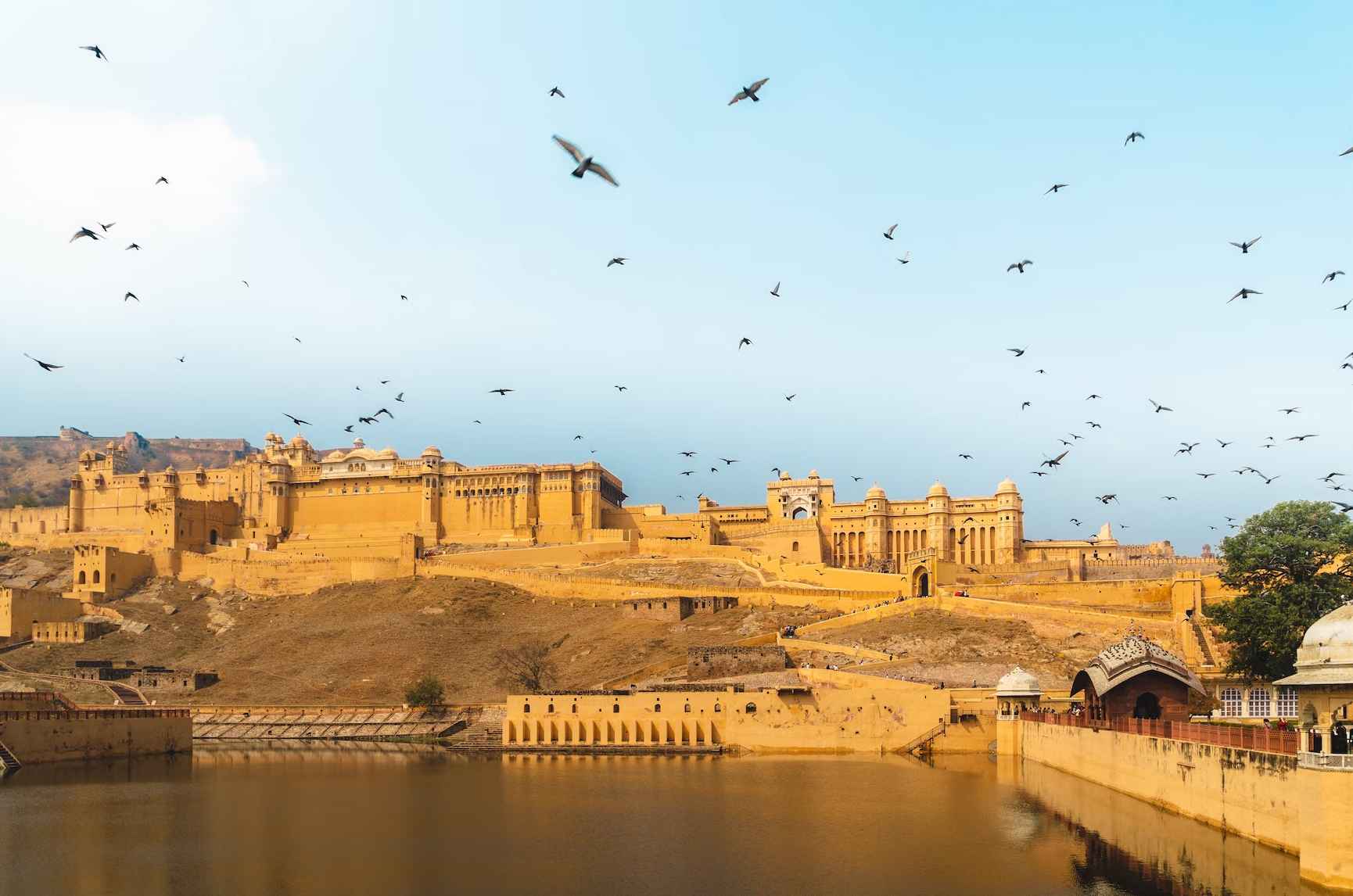
If you're a traveller with a penchant for history, grandeur, and architectural marvels, a visit to the forts of Rajasthan in India is a journey back in time. Rajasthan, the land of kings and warriors, is known for its majestic forts that stand as testaments to the region's rich heritage and valour. Here's what you need to know to make the most of your visit to the forts of Rajasthan:
Amer Fort (Jaipur): Located in the Pink City of Jaipur, Amer Fort is a magnificent structure that showcases a blend of Hindu and Mughal architectural styles. This hilltop fort offers breathtaking views of the surrounding landscape. Explore its intricate palaces, courtyards, and temples, including the Diwan-e-Aam (Hall of Public Audience), Diwan-e-Khas (Hall of Private Audience), and Sheesh Mahal (Mirror Palace). Don't miss the chance to experience an elephant ride up to the fort's entrance.
Mehrangarh Fort (Jodhpur): Rising majestically above the Blue City of Jodhpur, Mehrangarh Fort is an imposing stronghold that boasts intricate carvings, expansive courtyards, and palatial interiors. Explore its numerous galleries and museums, which house an impressive collection of artefacts, including arms, costumes, paintings, and musical instruments. From the fort's ramparts, enjoy panoramic views of the city and the Thar Desert.
Junagarh Fort (Bikaner): Junagarh Fort in Bikaner is a well-preserved marvel that showcases a blend of Rajput and Mughal architectural styles. This formidable fortress is known for its intricate stone carvings, ornate balconies, and beautifully decorated palaces. Explore the Diwan-e-Khas (Hall of Private Audience), Anup Mahal (Grand Hall), and Phool Mahal (Flower Palace). The fort's museum displays an impressive collection of weaponry, art, and royal artefacts.
Jaisalmer Fort (Jaisalmer): Rising like a golden mirage in the heart of the Thar Desert, Jaisalmer Fort is a UNESCO World Heritage Site. This living fort is home to a vibrant community, with shops, restaurants, and houses tucked within its ancient walls. Explore the narrow lanes, visit Jain temples, and soak in the enchanting atmosphere of this "Golden City." Don't miss the panoramic view of the sunset from the fort's ramparts.
Chittorgarh Fort (Chittorgarh): Chittorgarh Fort is a symbol of Rajput pride and valour. This colossal fortress perched on a hilltop overlooks the city of Chittorgarh. Explore its palaces, temples, towers, and reservoirs. The Vijay Stambh (Victory Tower) and Kirti Stambh (Tower of Fame) are iconic structures within the fort. The fort's history is filled with tales of heroism and sacrifice, making it an essential destination for history enthusiasts.
Kumbhalgarh Fort (Kumbhalgarh): Located amidst the lush Aravalli Hills, Kumbhalgarh Fort is a UNESCO World Heritage Site known for its massive walls that stretch over 36 kilometres, making it the second-longest continuous wall in the world after the Great Wall of China. Explore the palaces, temples, and intricately carved pillars within the fort. The panoramic views from the fort's walls are truly mesmerising.
Jaigarh Fort (Jaipur): Situated on a hilltop overlooking Amer Fort, Jaigarh Fort is a massive structure that offers stunning views of the surrounding landscape. Known as the "Fort of Victory," it is renowned for housing the world's largest cannon on wheels, the Jaivana Cannon. Explore the fort's palaces, gardens, and armoury museum, and learn about its military history and defences.
When visiting the forts of Rajasthan, it's advisable to hire a knowledgeable guide who can provide historical insights and interesting anecdotes. Take your time to explore these architectural marvels, soak in the rich history, and marvel at the ingenuity and craftsmanship of the bygone era. The forts of Rajasthan will transport you to a world of opulence, valour, and timeless beauty.
"The Sundarbans"
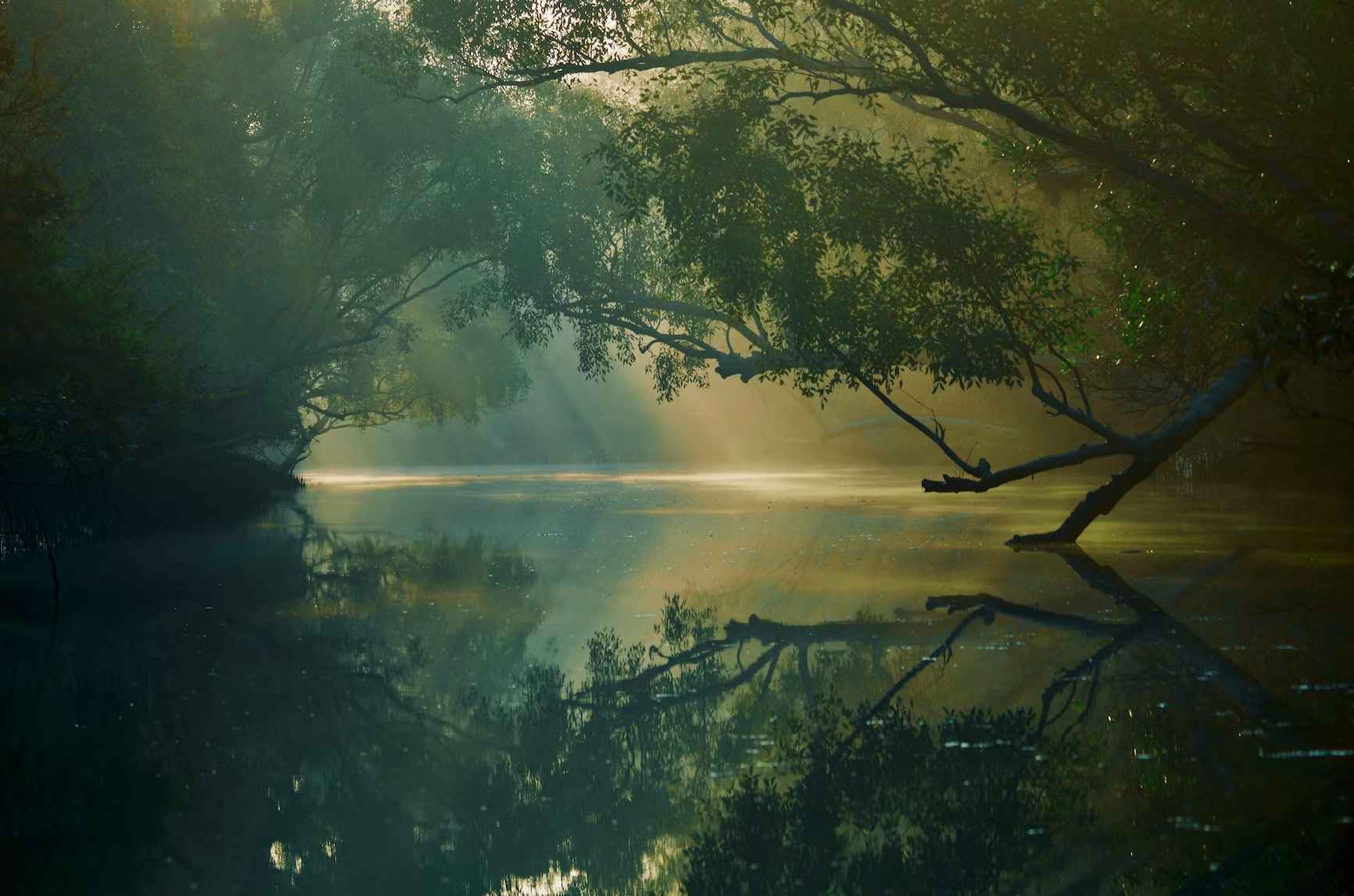
If you're a nature enthusiast and an adventurous traveller, a visit to the Sundarbans in Bangladesh and India is an experience like no other. The Sundarbans is the largest mangrove forest in the world, spanning across the delta of the Ganges, Brahmaputra, and Meghna rivers. Here's what you need to know to make the most of your visit to the Sundarbans:
Biodiversity and UNESCO World Heritage Site: The Sundarbans is a UNESCO World Heritage Site due to its exceptional biodiversity. It is home to the Royal Bengal Tiger, the iconic and endangered species that roams freely in the dense mangrove forests. Apart from tigers, the Sundarbans also shelters various other wildlife, including crocodiles, snakes, spotted deer, monkeys, and a rich variety of bird species. The ecosystem of the Sundarbans is incredibly diverse, with its intricate network of estuaries, rivers, and creeks.
Mangrove Safari: Embark on an exciting mangrove safari to explore the wilderness of the Sundarbans. Travel through the winding rivers and narrow channels, accompanied by experienced guides and forest officials who will ensure your safety and provide valuable insights about the flora and fauna. Keep your eyes peeled for sightings of the majestic Royal Bengal Tigers and other wildlife.
Birdwatching: The Sundarbans is a paradise for birdwatchers, with over 300 species of birds found in the region. Keep your binoculars ready to spot beautiful birds such as kingfishers, herons, egrets, storks, and the vibrant red junglefowl. The mangrove ecosystem provides a unique habitat for both resident and migratory birds, making it a haven for bird enthusiasts.
Sundarbans National Park: In India, the Sundarbans is also home to the Sundarbans National Park, a designated tiger reserve and biosphere reserve. Explore the park through boat safaris, nature trails, and watchtowers that offer panoramic views of the forest. The park provides opportunities for wildlife spotting and a chance to witness the elusive Royal Bengal Tiger in its natural habitat.
Cultural Heritage: The Sundarbans region is not only rich in natural wonders but also steeped in cultural heritage. Interact with the local communities, predominantly the indigenous people known as "Munda" and "Bawali," who have a deep connection with the forest. Learn about their traditional lifestyles, folklore, and their harmonious coexistence with nature.
River Cruises: Experience the serenity and beauty of the Sundarbans by embarking on a river cruise. Cruises allow you to navigate through the tranquil waterways, providing a unique perspective of the mangrove forest. Enjoy the stunning views, capture breathtaking sunsets, and immerse yourself in the peaceful ambiance of the Sundarbans.
Conservation Efforts: The Sundarbans face environmental challenges due to climate change and human activities. Take the opportunity to learn about the conservation efforts undertaken to protect this delicate ecosystem. Understand the importance of preserving the Sundarbans for future generations and contribute to responsible tourism practices during your visit.
When visiting the Sundarbans, it's important to respect the wildlife and follow the guidelines provided by the authorities. Pack appropriate clothing, insect repellent, and sun protection, as the region can be hot and humid. Embrace the raw beauty of the Sundarbans, connect with nature, and let this unique mangrove forest leave a lasting impression on your soul.
"The Ajanta and Ellora Caves"
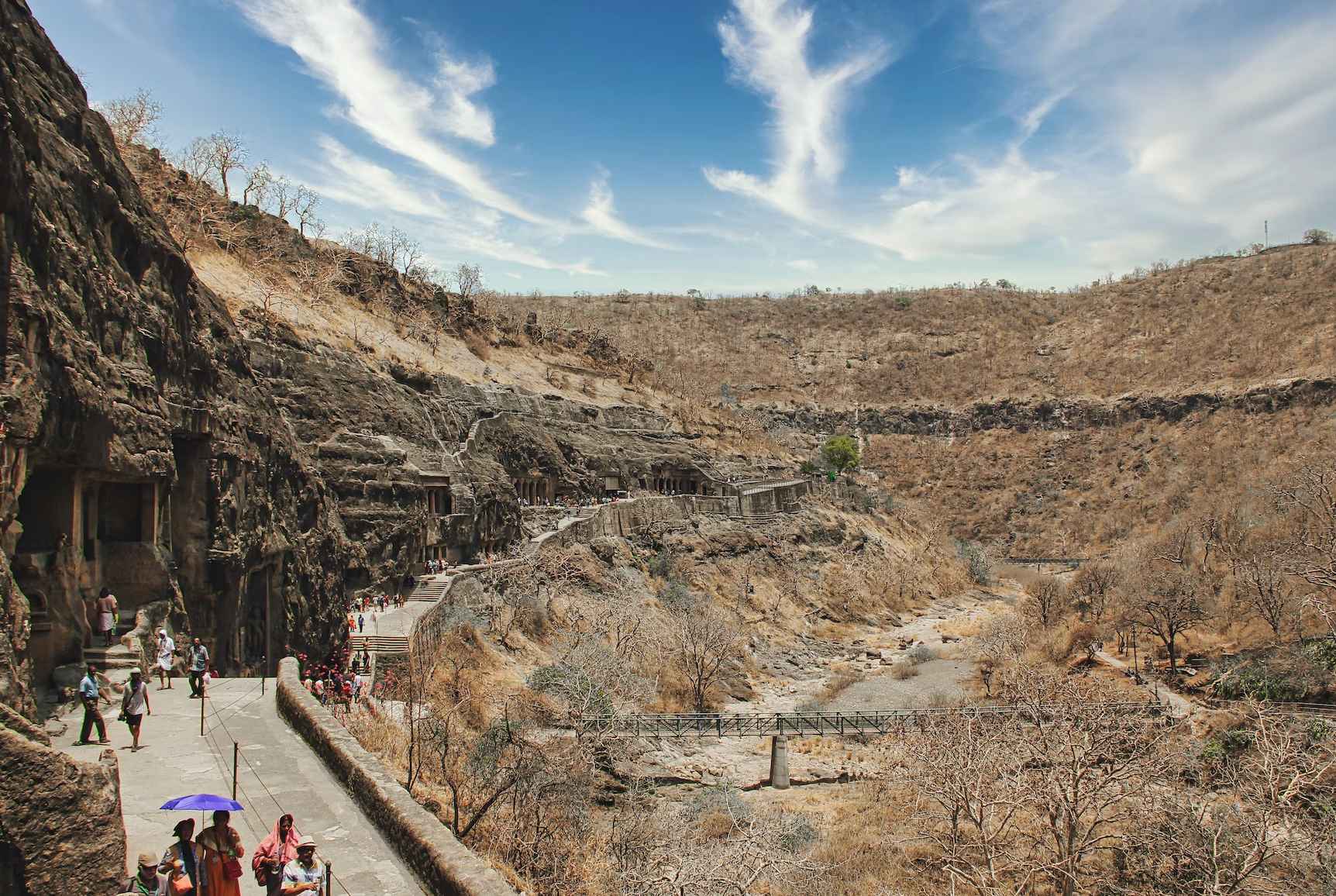
If you're a traveller with a keen interest in ancient history, art, and spirituality, a visit to the Ajanta and Ellora Caves in Maharashtra, India, is an absolute must. These UNESCO World Heritage Sites are renowned for their exceptional rock-cut architecture, stunning murals, and religious significance. Here's what you need to know to make the most of your visit to the Ajanta and Ellora Caves:
Ajanta Caves: The Ajanta Caves, located near Aurangabad, date back to the 2nd century BCE to 6th century CE. These ancient caves comprise 30 rock-cut Buddhist temples and monasteries that were carved into the horseshoe-shaped cliff of the Waghora River. The highlight of the Ajanta Caves is the magnificent murals that adorn the walls, depicting stories from the life of Buddha and Jataka tales. These intricate paintings, executed with natural pigments, showcase the artistry and craftsmanship of the ancient era.
Ellora Caves: Situated approximately 30 kilometres from Aurangabad, the Ellora Caves are a testament to the religious harmony that prevailed during the mediaeval period in India. This complex consists of 34 caves carved out of the Charanandri Hills and represents three different religions: Buddhism, Hinduism, and Jainism. The most famous cave is Cave 16, also known as the Kailash Temple, a remarkable architectural masterpiece dedicated to Lord Shiva. This monolithic temple is the largest rock-cut structure in the world and showcases intricate carvings and sculptures.
Architecture and Carvings: The Ajanta and Ellora Caves exhibit a fusion of different architectural styles. The Buddhist caves at Ajanta feature chaitya halls (prayer halls) and viharas (monasteries), while the Hindu and Jain caves at Ellora display intricate sculptures, mandapas (assembly halls), and temples. The carvings and sculptures depict gods, goddesses, celestial beings, mythological figures, and scenes from religious texts, providing valuable insights into ancient Indian culture and mythology.
Spiritual Significance: The Ajanta and Ellora Caves hold immense spiritual importance for followers of Buddhism, Hinduism, and Jainism. The serene ambiance and the aura of devotion make these sites perfect for introspection and meditation. Witness the reverence of pilgrims as they offer prayers and seek blessings in these ancient abodes of worship.
Exploring the Caves: When visiting the caves, it is advisable to start with the Ajanta Caves and then proceed to the Ellora Caves. Ajanta can be explored in a day, while Ellora may require more time due to its larger complex. It's best to hire a guide who can provide detailed information about the caves, their history, and the significance of the artwork.
Light and Sound Show: Witness the captivating stories and legends associated with the Ajanta and Ellora Caves through the mesmerising light and sound shows held in the evenings. These shows bring the history and cultural heritage of the caves to life, creating an immersive and unforgettable experience.
Nearby Attractions: While in the region, you can also explore other attractions in Aurangabad, such as the Bibi Ka Maqbara, a stunning replica of the Taj Mahal, and the Daulatabad Fort, known for its impressive architecture and panoramic views.
A visit to the Ajanta and Ellora Caves is a journey into the past, allowing you to marvel at the ingenuity and artistic brilliance of ancient civilizations. Immerse yourself in the stories depicted on the walls, feel the spiritual energy that permeates these sacred spaces, and appreciate the architectural wonders carved out of solid rock.
Remember to plan your visit accordingly, considering the best time to explore the caves and the nearby attractions. Take your time to absorb the rich history, soak in the beauty of the art, and embrace the profound spirituality that emanates from the Ajanta and Ellora Caves.
"The Golden Temple of Amritsar"
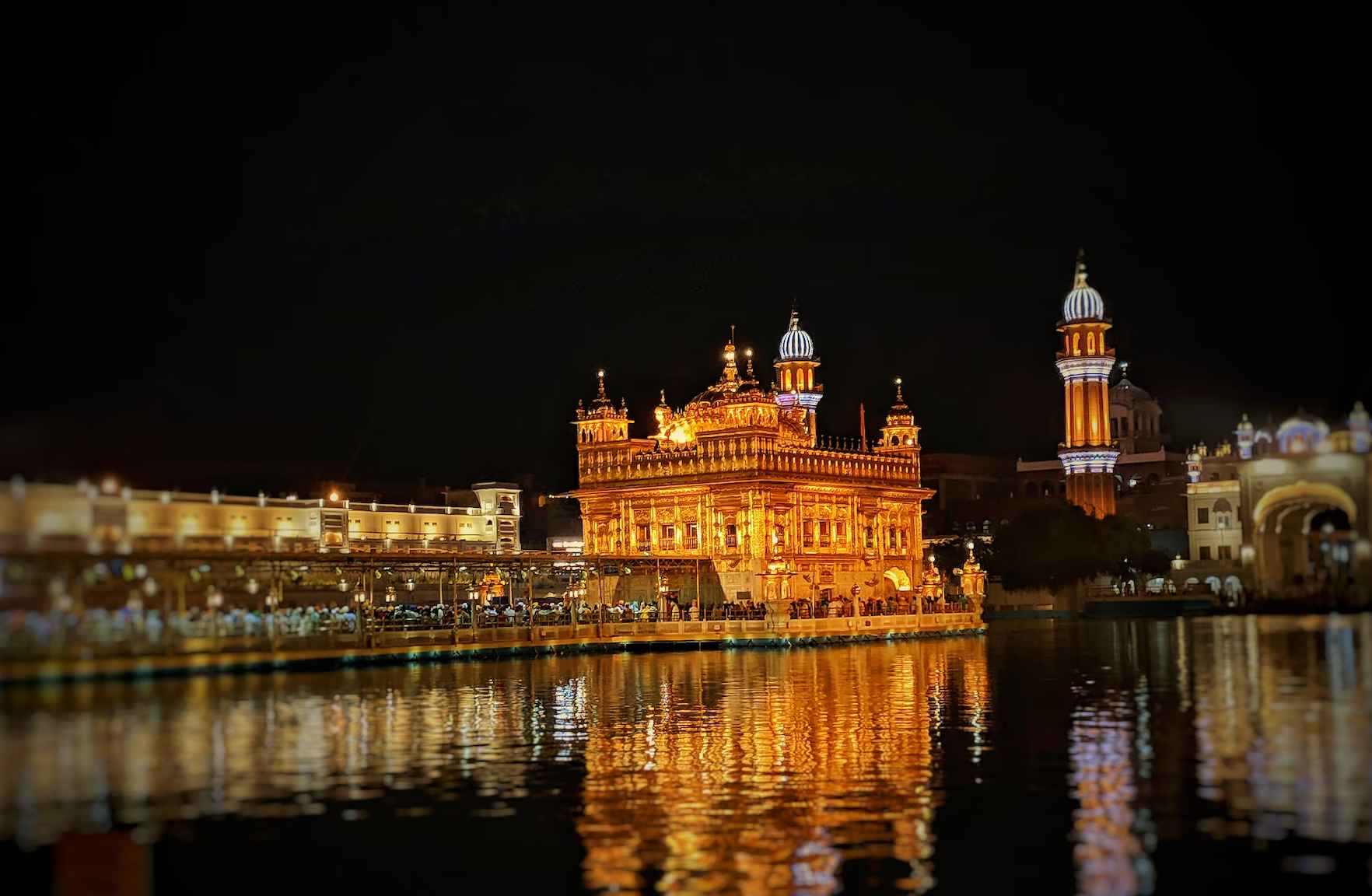
If you're a traveller seeking a blend of spirituality, history, and architectural grandeur, a visit to the Golden Temple in Amritsar, India, is a must. Also known as Harmandir Sahib or Darbar Sahib, the Golden Temple is the holiest shrine of Sikhism and an iconic symbol of peace and unity. Here's what you need to know to make the most of your visit to the Golden Temple:
Spiritual Significance: The Golden Temple holds immense spiritual significance for Sikhs around the world. It is considered the spiritual and cultural centre of Sikhism, attracting millions of devotees and visitors each year. The temple complex is home to the Guru Granth Sahib, the holy scripture of Sikhism, which is treated with utmost reverence and recited continuously.
Architectural Splendour: The Golden Temple is a masterpiece of architectural beauty. Its gilded exterior, adorned with intricate carvings and delicate marble work, glimmers majestically in the sunlight. The temple complex features a unique blend of Indo-Islamic and Sikh architectural styles, with the main building being located in the middle of the Amrit Sarovar (pool of nectar).
Amrit Sarovar: The Amrit Sarovar surrounding the Golden Temple is a sacred pool believed to have healing properties. Pilgrims and visitors participate in a ritual of washing their hands and feet before entering the temple complex. Many people also take a dip in the sarovar, as it is believed to cleanse the soul and bestow blessings.
Langar (Community Kitchen): One of the most remarkable aspects of the Golden Temple is its langar, a free community kitchen that serves meals to all visitors regardless of caste, religion, or social status. The langar exemplifies the Sikh principle of equality and hospitality. Joining the langar and partaking in a meal is a humbling and enriching experience.
Nighttime Palki Sahib Ceremony: Witness the breathtaking Palki Sahib ceremony that takes place every evening when the Guru Granth Sahib is ceremoniously carried to its resting place in the Akal Takht (a seat of Sikh religious authority). The beautifully decorated palanquin, accompanied by devotees singing hymns, is a sight to behold.
Historical Significance: The Golden Temple has a rich historical background. It has witnessed significant events and played a pivotal role in Sikh history, including acts of bravery and sacrifice. Explore the Sikh Museum within the temple complex to learn about the history, traditions, and teachings of Sikhism.
Cultural Experience: Apart from the spiritual aspect, the Golden Temple offers a vibrant cultural experience. Immerse yourself in the enchanting melodies of kirtan (Sikh devotional music) and witness the rhythmic Sikh martial arts display known as Gatka. Explore the bustling bazaars surrounding the temple complex, where you can find traditional Sikh garments, handicrafts, and religious artifacts.
Volunteer Opportunities: The Golden Temple welcomes volunteers who wish to contribute their time and services. You can engage in seva (selfless service) by helping in the langar, cleaning the temple premises, or assisting in other tasks. Participating in seva allows you to connect with the community and experience the spirit of giving.
When visiting the Golden Temple, be mindful of the cultural and religious customs. Cover your head, remove your shoes, and maintain a respectful demeanour. The temple complex is open 24/7, allowing you to experience its serene beauty at any time.
A visit to the Golden Temple is a profound and soul-stirring experience, offering a glimpse into the spiritual essence of Sikhism. As you bask in the golden glow of the temple, you'll witness the power of faith, unity, and selfless service that are central to Sikh philosophy. Embrace the tranquillity, immerse yourself in the divine atmosphere, and let the Golden Temple leave an indelible mark on your heart and soul.
Disclaimer: All images used on this blog are believed to be in the public domain or have been labeled for reuse with modification. However, if any image is mistakenly posted without proper credit or permission, please contact us immediately and the image will be removed or credit will be provided to the rightful owner. And also we would like to mention that, as per the legalised privacy policy, you need to seek our permission before copying any original content from our website.











